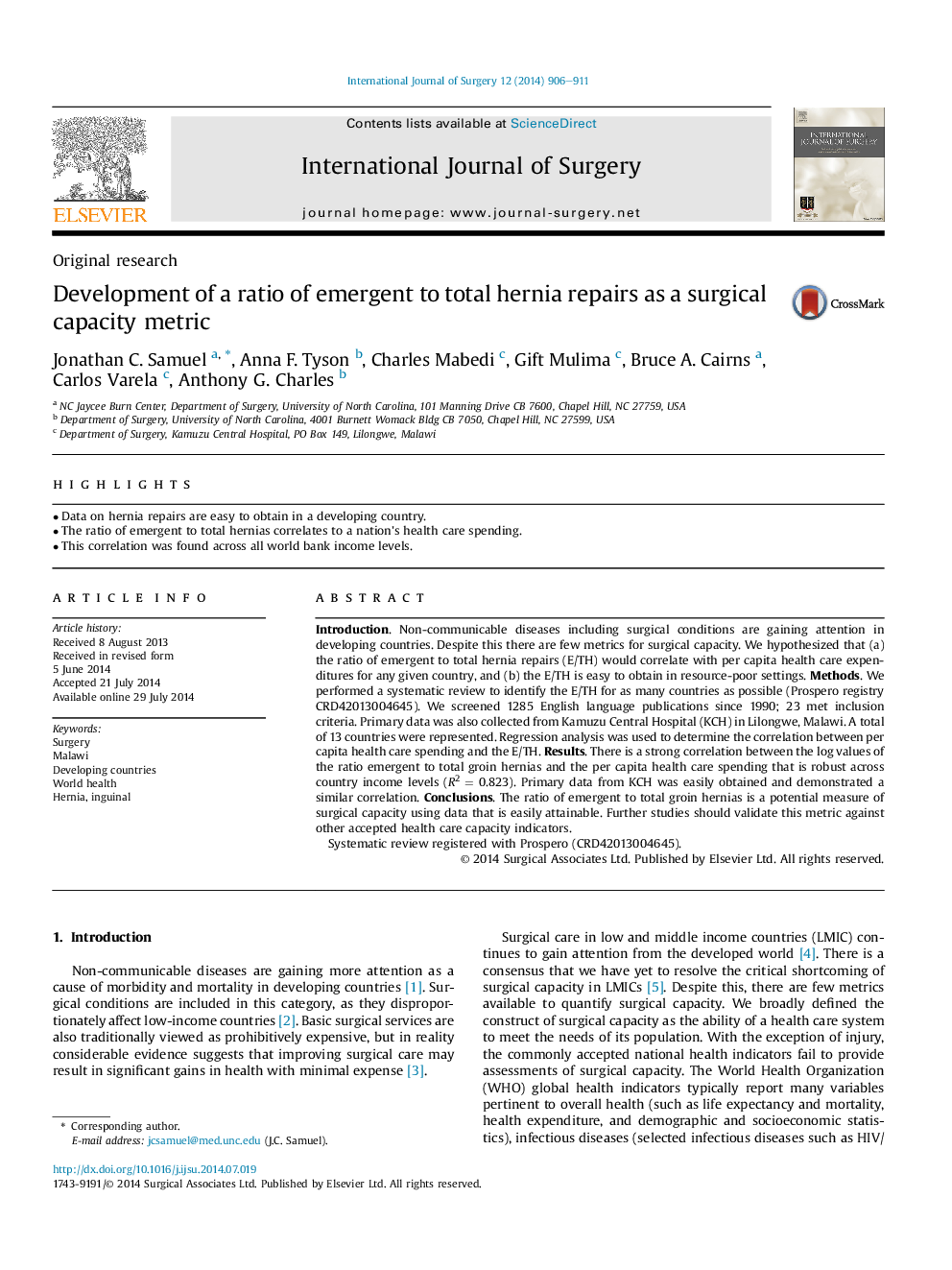| Article ID | Journal | Published Year | Pages | File Type |
|---|---|---|---|---|
| 6251708 | International Journal of Surgery | 2014 | 6 Pages |
â¢Data on hernia repairs are easy to obtain in a developing country.â¢The ratio of emergent to total hernias correlates to a nation's health care spending.â¢This correlation was found across all world bank income levels.
Introduction. Non-communicable diseases including surgical conditions are gaining attention in developing countries. Despite this there are few metrics for surgical capacity. We hypothesized that (a) the ratio of emergent to total hernia repairs (E/TH) would correlate with per capita health care expenditures for any given country, and (b) the E/TH is easy to obtain in resource-poor settings. Methods. We performed a systematic review to identify the E/TH for as many countries as possible (Prospero registry CRD42013004645). We screened 1285 English language publications since 1990; 23 met inclusion criteria. Primary data was also collected from Kamuzu Central Hospital (KCH) in Lilongwe, Malawi. A total of 13 countries were represented. Regression analysis was used to determine the correlation between per capita health care spending and the E/TH. Results. There is a strong correlation between the log values of the ratio emergent to total groin hernias and the per capita health care spending that is robust across country income levels (R2Â =Â 0.823). Primary data from KCH was easily obtained and demonstrated a similar correlation. Conclusions. The ratio of emergent to total groin hernias is a potential measure of surgical capacity using data that is easily attainable. Further studies should validate this metric against other accepted health care capacity indicators.Systematic review registered with Prospero (CRD42013004645).
